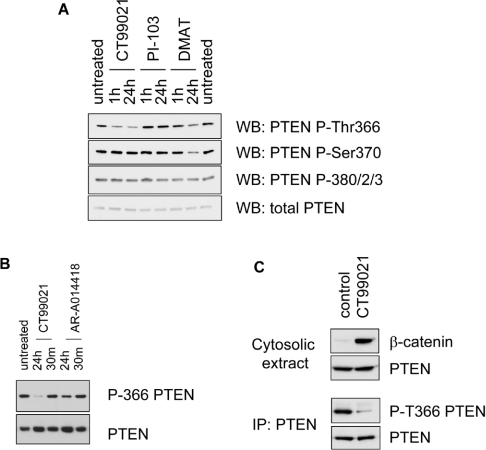Figure 2. Inhibition of GSK3 and CK2 reduces phosphorylation of PTEN on Thr366 and Ser370 respectively.
(A) NIH 3T3 cells were treated for the indicated times with the GSK3 inhibitor CT99021 (5 μM), the PI3K inhibitor PI-103 (1 μM) or the CK2 inhibitor DMAT (20 μM) and phosphorylation of PTEN was investigated by Western blotting using phospho-specific antibodies. Very similar results were obtained in U87MG cells expressing wild-type PTEN. (B) U87MG cells expressing PTEN were treated with the GSK3 inhibitors CT99021 (5 μM) or AR-A0144-18 (10 μM) for either 30 min (30 m) or 24 h before PTEN phosphorylation was investigated using PTEN phospho-Thr366-specific antibodies (P-366 PTEN). (C) MDCK cells were left untreated or treated with 2 μM CT99021 for 6 h. Cells were then subjected to hypotonic lysis to prepare a cytosolic extract, and the presence of PTEN and β-catenin in this extract and the phosphorylation of PTEN were investigated by immunprecipitation and Western blotting using phospho-Thr366-specific antibodies (P-T366 PTEN). The stabilization of cytosolic β-catenin was used to verify the efficacy of GSK3 inhibition. All results are representative of at least two separate experiments in the same cell type. Quantification of these results is shown in Supplementary Figure 3 at http://www.BiochemJ.org/bj/405/bj4050439add.htm.

